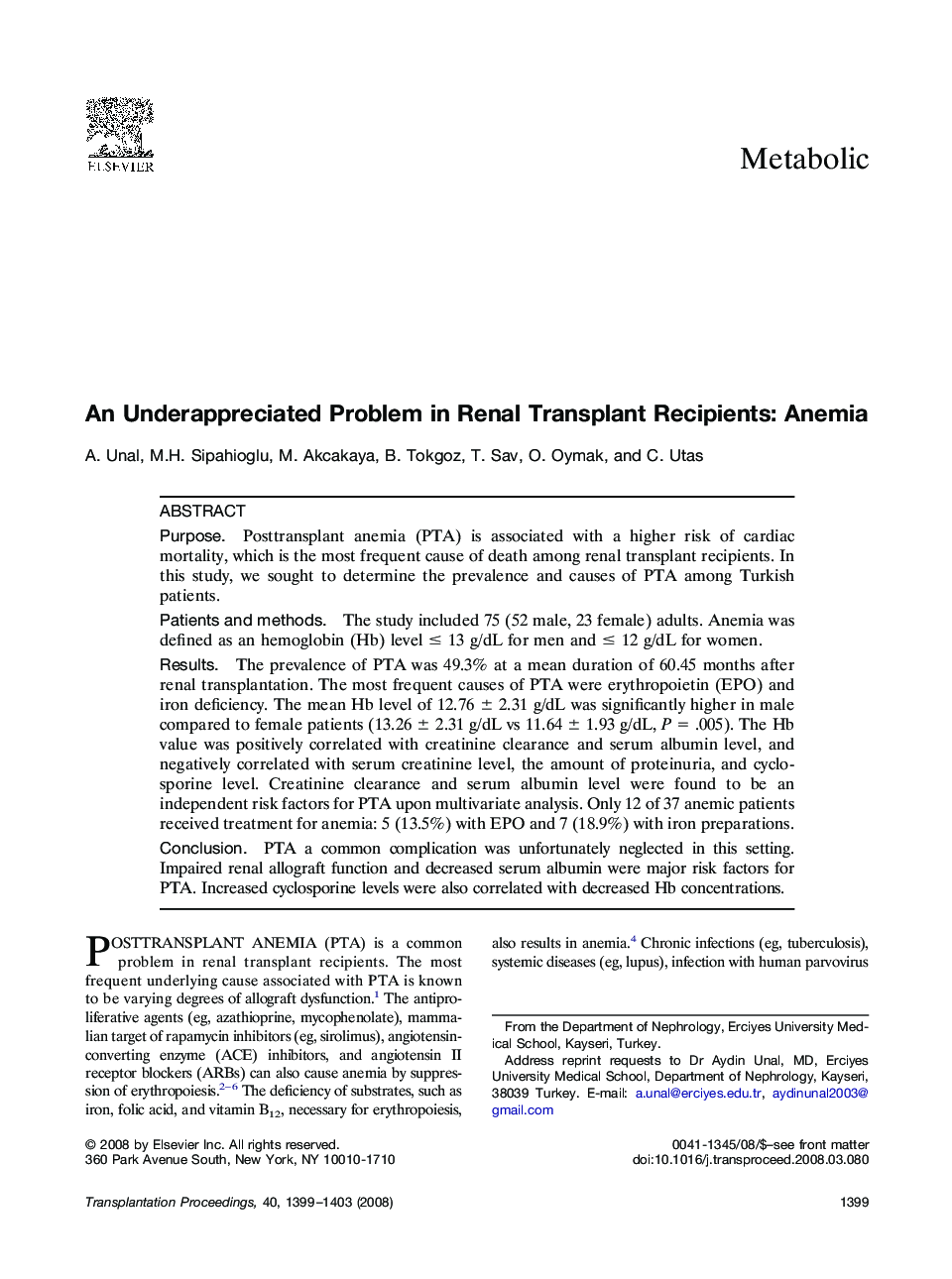| Article ID | Journal | Published Year | Pages | File Type |
|---|---|---|---|---|
| 4258227 | Transplantation Proceedings | 2008 | 5 Pages |
PurposePosttransplant anemia (PTA) is associated with a higher risk of cardiac mortality, which is the most frequent cause of death among renal transplant recipients. In this study, we sought to determine the prevalence and causes of PTA among Turkish patients.Patients and methodsThe study included 75 (52 male, 23 female) adults. Anemia was defined as an hemoglobin (Hb) level ≤ 13 g/dL for men and ≤ 12 g/dL for women.ResultsThe prevalence of PTA was 49.3% at a mean duration of 60.45 months after renal transplantation. The most frequent causes of PTA were erythropoietin (EPO) and iron deficiency. The mean Hb level of 12.76 ± 2.31 g/dL was significantly higher in male compared to female patients (13.26 ± 2.31 g/dL vs 11.64 ± 1.93 g/dL, P = .005). The Hb value was positively correlated with creatinine clearance and serum albumin level, and negatively correlated with serum creatinine level, the amount of proteinuria, and cyclosporine level. Creatinine clearance and serum albumin level were found to be an independent risk factors for PTA upon multivariate analysis. Only 12 of 37 anemic patients received treatment for anemia: 5 (13.5%) with EPO and 7 (18.9%) with iron preparations.ConclusionPTA a common complication was unfortunately neglected in this setting. Impaired renal allograft function and decreased serum albumin were major risk factors for PTA. Increased cyclosporine levels were also correlated with decreased Hb concentrations.
